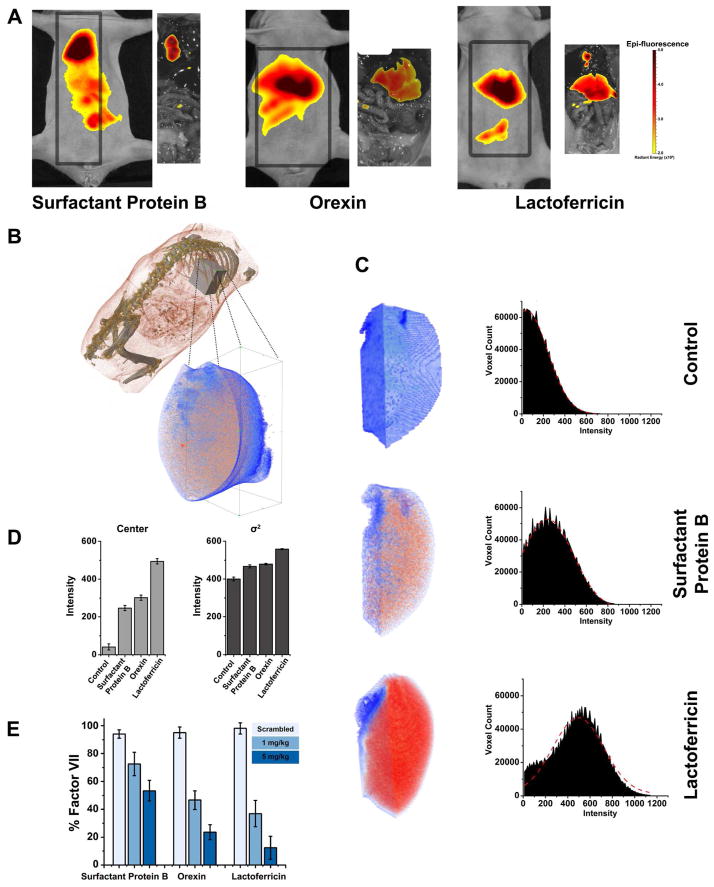Figure 3. In vivo.
studies of the novel cell penetrating peptides. (A) and (B) Biodistribution studies of the peptide decorated nanoparticles. In (A) we utilized a near infrared dye (Cy5.5) conjugated siRNA to formulate the nanoparticles and delivered them via tail vein injection. The animals were imaged with an IVIS Spectrum imaging system 6 hours post injection. The nanoparticles are primarily accumulated in the lungs and livers of the animals. In (B) we conjugated the siRNA to an iodine containing hormone, thyroxine, and injected the formulations via tail vain. We imaged the animals using a micro CT system. In order to quantify the relative amounts of each formulation we considered as a region of interest the left lobe of the liver below the heart after the diaphragm (indicated using grey cube in the figure). (C) Image intensity quantified after averaging the intensity in a 3x3x3 voxel volume and fitted to a Gaussian distribution. (D) We utilized the characteristics of the distributions, like the center and the variance of the distribution, in order to compare the nanoparticle accumulation in the tissue. In an example of three variants of decorated nanoparticles with surfactant protein B, orexin and lactoferricin peptides, the latter exhibited the highest accumulation in the liver with the other two also exhibiting high accumulation. (E) Mice were injected with peptide decorated nanoparticles containing siRNA against a liver synthesized blood circulating protein, Factor VII. Three days post injection, amount of Factor VII in the blood was measured using Factor VII-specific ELISA. In all of the cases n=5 and p<0.01. Interestingly the nanoparticle activity correlated with the biosdistribution as quantified with the contrast agent based analysis. Nanoparticles decorated with scrambled peptide sequences, at 5 mg/kg siRNA concentration, had no activity in knocking down Factor VII.

